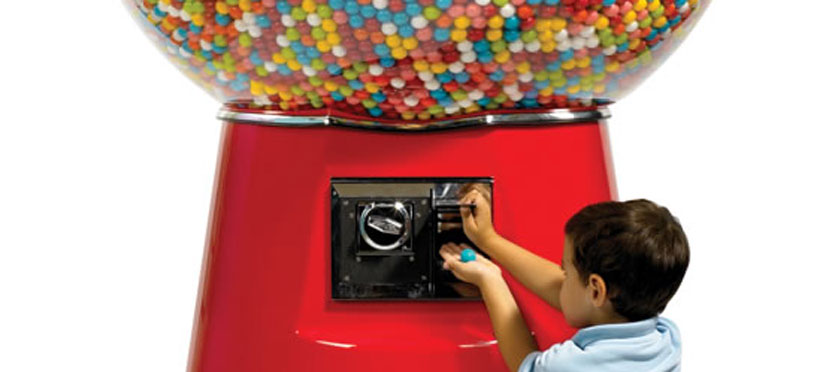Are Gumball Machines Profitable?

Gumball machines have been a nostalgic staple in arcades, grocery stores, and family-friendly venues for decades. Their bright colors, delightful sounds, and the thrill of anticipation when you turn the crank to receive a treat have made them iconic. But beyond their charm, a crucial question arises: Are gumball machines profitable? This article delves into the operational aspects of gumball machines, their potential for profit, and the factors influencing their success.
Quick Info Table: Gumball Machine Profitability Overview
| Aspect | Details |
|---|---|
| Initial Investment | $50 - $500 per machine |
| Average Gross Profit | $0.25 - $0.50 per gumball sold |
| Monthly Revenue Potential | $100 - $1,000+ |
| Location Importance | High (foot traffic is key) |
| Maintenance Cost | Low (typically under $20/month) |
The Appeal of Gumball Machines
Nostalgia and Fun
Gumball machines evoke a sense of nostalgia for many, reminding them of childhood visits to candy stores or arcades. This emotional connection can draw customers in, particularly in family-oriented locations. The vibrant colors and enticing shapes of the products inside also play a significant role in their appeal, making them attractive to both children and adults.
Simple Business Model
The business model of gumball machines is straightforward. You purchase the machines, stock them with gumballs or other small treats, and place them in high-traffic areas where they can generate revenue with minimal effort. This simplicity is alluring for many entrepreneurs and investors, particularly those looking to enter the vending industry with lower capital.
Factors Influencing Profitability
Initial Investment Costs
Starting a gumball machine business requires an upfront investment. The cost of a gumball machine can range from $50 to $500, depending on the quality and features of the machine. High-end machines may include features like digital displays or multiple candy options, which can attract more customers but also increase initial costs.
Product Cost and Pricing Strategy
The average cost of a gumball is relatively low, typically around $0.05. When sold for $0.25 to $0.50, this allows for a gross profit margin of $0.20 to $0.45 per gumball. However, pricing strategies can vary based on location and competition. Successful operators often find a sweet spot that maximizes both sales volume and profit margins.
Location, Location, Location
The placement of gumball machines is arguably the most critical factor in determining profitability. High-foot-traffic areas like shopping malls, schools, and family restaurants tend to yield better sales. Machine operators should conduct thorough research on potential locations, considering factors such as demographics, foot traffic patterns, and competition from other vending options.
Maintenance and Restocking
Gumball machines require regular maintenance and restocking, which can incur costs. However, these costs are generally low—often under $20 per month for basic maintenance. Operators must ensure machines are kept clean and stocked to maintain customer interest. Neglecting these duties can lead to decreased sales and damaged reputation.
Revenue Potential and Growth
Monthly Revenue Estimates
The revenue potential for gumball machines can be impressive. Depending on the location and the number of machines operated, monthly revenues can range from $100 to over $1,000. For instance, a well-placed machine in a busy area could easily sell 200 gumballs a month, generating $50 in profit.
Scaling the Business
Once a gumball machine business is established and profitable, scaling can be a natural next step. Operators can increase their inventory by purchasing additional machines and placing them in new locations. Diversifying the product offerings—such as including capsule toys or other small candies—can also boost sales and attract a broader customer base.
Challenges and Considerations
Competition
While gumball machines can be profitable, they also face competition from other vending options, such as snack and beverage machines. Operators must be strategic about their machine placements and product offerings to stand out in the crowded market.
Market Saturation
In some areas, the market for gumball machines may become saturated, leading to diminished returns. Entrepreneurs should be aware of the local landscape and consider entering less saturated markets or unique locations to maximize their chances of success.
Seasonal Variations
Sales can fluctuate based on the season. For instance, warmer months may see an increase in sales due to higher foot traffic in outdoor venues. Conversely, sales may dip during colder months when people are less likely to venture out. Operators should plan for these seasonal variations in their revenue forecasts.
Success Stories and Best Practices
Case Study: A Local Success
Consider the story of Tom, who started with just one gumball machine in his neighborhood park. After researching foot traffic and ideal pricing, he quickly saw success. Tom regularly restocked the machine and maintained its appearance. Within a year, he expanded to five machines in various local hotspots, significantly increasing his income.
Best Practices for Gumball Machine Operators
To maximize profitability, operators should consider the following best practices:
- Research Locations: Identify high-traffic areas and assess the competition.
- Engage Customers: Use eye-catching designs and colorful products to attract attention.
- Maintain Machines: Regularly clean and restock machines to keep them appealing.
- Monitor Trends: Stay updated on candy trends and seasonal preferences to adjust inventory accordingly.
Conclusion
In conclusion, while gumball machines can be profitable, success depends on several factors, including initial investment, location, and effective management. The nostalgia and fun associated with gumball machines continue to attract customers, making them a viable option for entrepreneurs looking to delve into the vending business.
By understanding the dynamics of the market, maintaining a keen eye on operational details, and adapting to customer preferences, operators can turn gumball machines into a steady source of income. For those interested in starting a gumball machine business, the potential for profitability exists, provided they approach it with careful planning and enthusiasm.



Comments ()